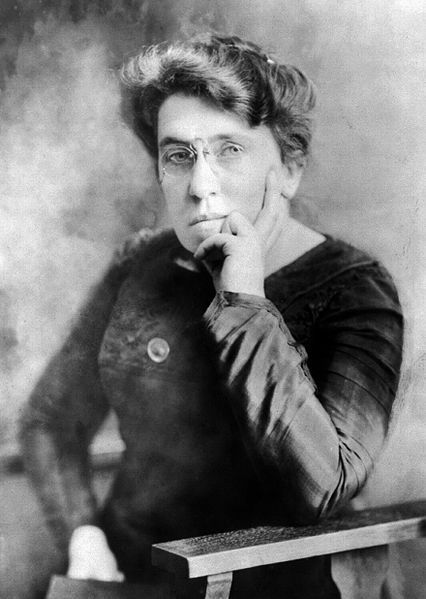
Emma Goldman is often depicted in current academic discourse as a mere prototypical feminist and socialist. Yet this collection of essays by Goldman reveals that she often expressed ideas which many of her present day admirers might find surprising and unsettling. She distrusted the proletariat, wrote disdainfully of the early feminists who were her contemporaries, and even expressed scepticism of women's suffrage. Goldman was an admirer of Nietzsche and in many ways represents a model of a superior individual who is capable of rising above the herd instincts of the masses and embracing confrontation with danger. She never hesitated to countenance both the ire of public authorities and the scorn of public opinion. As contemporary anarchists have fallen into the mundane habit of politically correct conformity, a full examination of Goldman's thought suggests the need for a new anarchism that reflects the martial spirit of which Goldman was an exemplary. Emma Goldman is often depicted in current academic discourse, and the “Left” in particular, as a role model for feminists and a champion of the proletariat. Keith Preston however in reviewing each chapter of Goldman’s most famous work “Anarchism and Other Essays” reveals that Emma Goldman often expressed ideas which many of her present day admirers will find surprising and unsettling. He highlights the fact that Emma Goldman distrusted the proletariat, wrote disdainfully of the early feminists who were her contemporaries, and expressed scepticism of women’s suffrage. Keith Preston maintains that Emma Goldman can only be really understood by recognising her admiration for the ideas of the German philosopher Friedrich Nietzsche (an admiration that she shared with Adolf Hitler and the National Socialists). He argues that Emma Goldman (as with Nietzsche’s “Zarathustra”) represents a model of a “superior individual” who is capable of rising above the herd instincts of the masses - one who never hesitated to countenance both the ire of public authorities and the scorn of public opinion. Politically correct she was not.
Author

Emma Goldman was a feminist anarchist known for her political activism, writing and speeches. She played a pivotal role in the development of anarchist political philosophy in North America and Europe in the first half of the twentieth century. Born in Kovno in the Russian Empire (present-day Kaunas, Lithuania), Goldman emigrated to the US in 1885 and lived in New York City, where she joined the burgeoning anarchist movement.Attracted to anarchism after the Haymarket affair, Goldman became a writer and a renowned lecturer on anarchist philosophy, women's rights, and social issues, attracting crowds of thousands. She and anarchist writer Alexander Berkman, her lover and lifelong friend, planned to assassinate Henry Clay Frick as an act of propaganda of the deed. Although Frick survived the attempt on his life, Berkman was sentenced to twenty-two years in prison. Goldman was imprisoned several times in the years that followed, for "inciting to riot" and illegally distributing information about birth control. In 1906, Goldman founded the anarchist journal Mother Earth. In 1917, Goldman and Berkman were sentenced to two years in jail for conspiring to "induce persons not to register" for the newly instated draft. After their release from prison, they were arrested—along with hundreds of others—and deported to Russia. Initially supportive of that country's Bolshevik revolution, Goldman quickly voiced her opposition to the Soviet use of violence and the repression of independent voices. In 1923, she wrote a book about her experiences, My Disillusionment in Russia. While living in England, Canada, and France, she wrote an autobiography called Living My Life. After the outbreak of the Spanish Civil War, she traveled to Spain to support the anarchist revolution there. She died in Toronto on May 14, 1940, aged 70. During her life, Goldman was lionized as a free-thinking "rebel woman" by admirers, and derided by critics as an advocate of politically motivated murder and violent revolution.Her writing and lectures spanned a wide variety of issues, including prisons, atheism, freedom of speech, militarism, capitalism, marriage, free love, and homosexuality. Although she distanced herself from first-wave feminism and its efforts toward women's suffrage, she developed new ways of incorporating gender politics into anarchism. After decades of obscurity, Goldman's iconic status was revived in the 1970s, when feminist and anarchist scholars rekindled popular interest in her life.